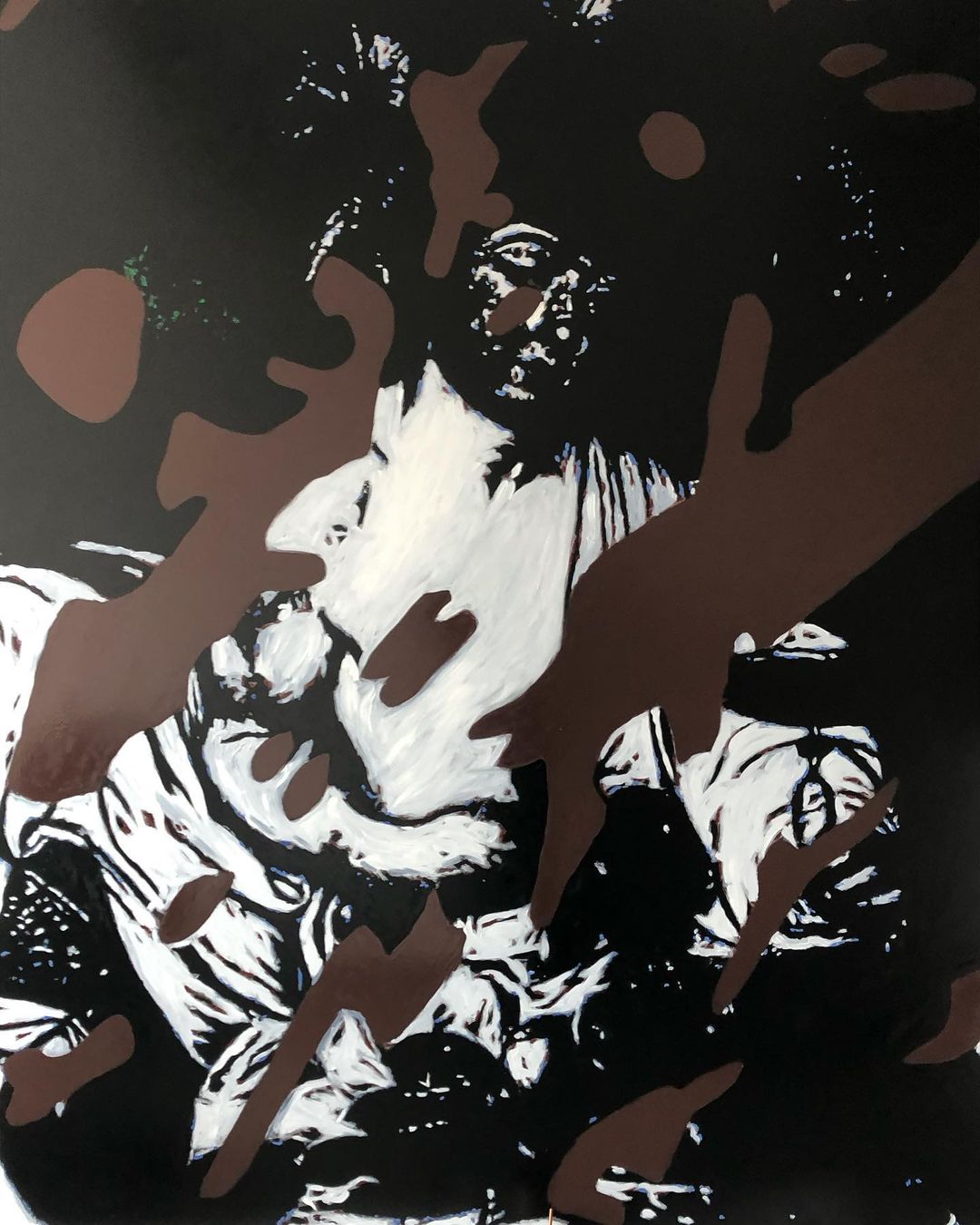
The Boy with the Face Tattoo. Artis Konstatin Dimopoulos
Work donated by Konstantin for the Sosltice Festival- On Sale
$8000.00
Stunning paint by Konstantin Dimopoulos, it has the strength of an immense tree, the silhouette of the Madonna and Child by Rafael Sanzio hidden and the postmodernity of the plastic eternalizing it, the darkness framing the light with the dance of Tabaco Road. It's really captivating.
https://www.instagram.com/p/CQx6PSHlA9C/
https://www.instagram.com/kondimopoulos/
https://kondimopoulos.com/
Konstantin Dimopoulos | Biography
Konstantin Dimopoulos’s multidisciplinary art practice incorporates sculpture, installation, performance, painting, printing and drawing in the creation of monumental imagery, social and environmental interventions and conceptual proposals that argue the potential of ‘art’ as a means of social engagement and change.
Drawing from his diverse personal cultural and political history, Dimopoulos fashions a visual language based on thematic and contextual constructions. These evolving pictorial narratives are descriptive of such varied issues as domestic violence, environmental ecocide, homelessness, and cultural appropriation.
Konstantin Dimopoulos was born in Port Said, Egypt to Greek parents and grew up at the mouth of the Suez Canal. His early paintings and prints explored the human condition ‘with a stark bravura’ – in the installation, Mind at the End of its Tether and The Barbed Wire Sang. In the 1990s, flexible shafts of carbon fiber became his new material of choice for purely linear, abstract kinetic sculptures exploring the volatility of natural forces. His pared-down color palette led to primarily monochromatic applications, also visible in his large-scale steel sculptures. Installations such as Level 4 and Kroc and the Creation of the Big Byte, at public gallery and museum venues explored the ‘viral’ aspect within contemporary civilization.
The Blue Trees, an ongoing environmental art intervention, exhibited at the Vancouver Biennale and since then has been realized around the United States, at the City of London arts festival 2013 when Dimopoulos created it outside St Paul’s Cathedral and thirty- five other cities around the world. The Blue Trees takes an urban landscape with which you are familiar and changes it into something surreal, unfamiliar, even uncomfortable. We are creatures who like certainty and we become disconcerted when our environment changes. Yet we have altered and destroyed much of the global environment.
The trees we color blue will revert back to their natural state. However, the primordial Old Growth Forests and Rainforests that are hundreds of years old are still disappearing at an alarming rate with no option of restoration, and with this destruction we have caused the extinction of countless species of flora and wildlife. These Forests are the lungs of the earth, providing much of the oxygen we breathe. With only some 30 percent of Old Growth Forests and 50 percent of Rainforests remaining I want to bring awareness to communities of this commercially-driven deforestation and the importance of trees to people and their environment.
The Blue Trees is part of a wider question that I ask - Can Art Save The World? Maybe not on its own, but it can generate thinking and discussion throughout the global community as a means to highlight social and environmental issues and raising social consciousness
Ecological and social issues and questions of the impact of an unthinking expansion of modern lifestyles, cities and consumption upon both nature and society, the unbounded potential for humans to damage a fragile planet are ideas that consistently thread through an often physically diverse oeuvre.
Black Parthenon is a repatriation art action, a public light installation highlighting the issue of the appropriation of cultural and sacred objects. The work not only addresses the call to repatriate the Parthenon Marbles back to Greece, but also the issue of global cultural appropriation and repatriation globally that we need to address as a society.
Black Parthenon uses various levels of scaffolding around which black perforated cloth is used as cladding to create an architectural imprint, a silhouette of the Parthenon. During the day the installation is a black funerary altarpiece that reflects a sense of loss; a void in the national psyche of countries which have had cultural icons and treasures taken from them. At night Black Parthenon explodes into vibrant white and blue light, the Parthenon’s iconic simplicity illuminating the surrounding darkness.
His paintings and sculptures are in public and private collections around the USA, Canada, Australia and New Zealand.










